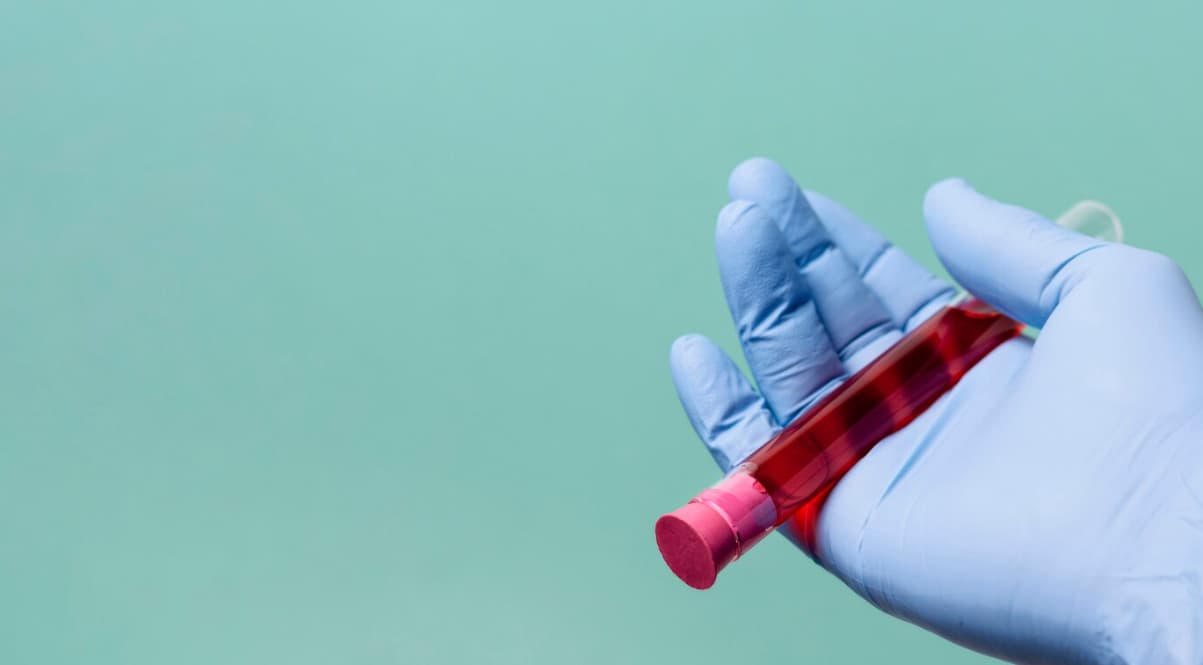In our modern, high-speed environment, finding the right balance between personal well-being and contributing to society can often seem like navigating a delicate balancing act. Picture this: you’ve just completed a plasma donation, basking in the fulfilling sensation of having positively impacted someone else’s life.
Your thoughts then shift to the workout you’ve planned later on, sparking a question in your mind, “Is exercising post-donation okay?” This predicament is not uncommon among individuals striving to maintain their own health while engaging in acts of kindness. Dive into this detailed guide to discover how donating plasma intersects with physical activity, ensuring you can help others while still prioritizing your own health.
- Understanding Plasma: Plasma, which is roughly 90% water, is also packed with crucial components such as hormones, nutrients, and proteins. These elements play a critical role in numerous bodily functions;
- The Plasma Donation Procedure: In the process of donating plasma, blood is extracted from the donor. The plasma is then isolated using a specialized machine, after which the red blood cells and other blood components are reintroduced to the donor’s body. In a typical donation session, around 500 to 800 milliliters of plasma are collected.
While some people may wonder if it’s possible to work out after donating plasma, it’s essential to consider suitable exercises like cycling or walking for belly fat effectively.
Donating plasma, while an altruistic act, is not without its immediate physiological responses. Recognizing and comprehending these immediate effects is pivotal for ensuring that donors can take optimal post-donation measures, especially if they’re considering engaging in activities like exercise. Let’s look at these effects further.
Managing Fluid Balance After Plasma Donation
Plasma comprises a significant portion of our blood, roughly 55%, and is predominantly water-based. Upon donating plasma, your body temporarily loses a substantial amount of this fluid, disrupting your internal fluid equilibrium.
- Dehydration Risks: The loss of plasma can lead to dehydration, detectable through various symptoms such as persistent thirst, a decrease in urine output, urine with a deep amber color, and skin that feels parched or lacks its usual elasticity. If dehydration progresses, it might result in more intense symptoms like accelerated respiration, increased heart rate, hollowed eyes, and in extreme situations, shock;
- Strategies for Rehydration: Preventive measures against dehydration after donating plasma include a recommended increase in fluid intake both prior to and following the donation. Hydration should be maintained not solely through water but also through fluids like sports drinks, which can help restore the body’s balance of electrolytes and minerals.
Light-Headedness After Plasma Donation
Extracting plasma from your system momentarily decreases the total volume of blood circulating within you. Your body, tuned to a certain volume of blood, might need a little time to adjust to this new state, which can cause feelings of lightheadedness or dizziness.
Besides experiencing dizziness, this situation might sometimes lead to feelings of nausea or, in more extreme cases, fainting. This is particularly likely if you quickly stand up or partake in heavy physical activities right after the plasma extraction.
To mitigate these effects, it’s recommended to take a brief rest post-donation, giving your body time to reestablish its balance. Eating something light can also be beneficial in regulating your blood sugar levels, which aids in reducing the likelihood of feeling dizzy.
Managing Post-Plasma Donation Fatigue
During plasma donation, red blood cells, which play a crucial role in oxygen transport, are returned to the donor. However, the temporary decrease in bodily fluid levels can increase the workload on the heart. This change might contribute to feelings of tiredness or exhaustion.
- Recognizing Symptoms: Post-donation fatigue can vary in its presentation. Common symptoms include a pervasive sense of weakness, a noticeable drop in energy levels, or an increased need for sleep. In some cases, donors might find it challenging to focus or maintain their usual level of activity in daily routines;
- Strategies for Recovery: To effectively combat this type of fatigue, rest is key. Allowing the body ample time to recuperate and restore its plasma levels can hasten the return to normal energy levels. Eating a well-balanced diet is also beneficial, as it supplies essential nutrients that support a faster recovery process.
Physical Activity’s Impact on Plasma Donation Outcomes

Delving into the immediate consequences of plasma donation, it’s vital to examine the intersection of these effects with physical activity, particularly given the physiological strain that exercise imposes on the body.
In discussing Hydration and Physical Activity, it is important to recognize that exercise, especially of high intensity, leads to rapid fluid loss in the body, mainly via perspiration. This process is essential for regulating body temperature and supporting metabolic functions.
However, this scenario becomes more complex when considered alongside the slight dehydration caused by plasma donation. The combination of these factors can significantly elevate the risk of dehydration, rendering the situation more critical than with exercise alone.
Regarding Blood Volume and Exercise, physical activity typically causes an increase in heart rate to fulfill the increased demand for oxygen-rich blood in various muscles and tissues. Post plasma donation, the blood experiences a temporary reduction in its fluid volume.
This situation presents challenges. With the heart working harder during exercise and the blood volume reduced, there could be a strain on the system, potentially leading to symptoms such as dizziness. In severe cases, particularly without sufficient recovery time post-donation, this can cause fainting, especially during intensive workouts.
Finally, the importance of Recovery After Donation must be emphasized. Following plasma donation, the body initiates recovery processes to replenish the lost plasma and normalize blood volume. Engaging in strenuous activities shortly after donation may redirect the body’s resources, hindering the plasma recovery process and potentially delaying the donor’s full recuperation.
Guidance for Exercising After Plasma Donation
For individuals balancing their dedication to plasma donation with maintaining their exercise regimen, there are specific recommendations to ensure a safe and effective approach:
Implementing a Waiting Period post-donation is a prudent measure. Health experts and plasma donation facilities typically advise waiting at least 24 hours before engaging in vigorous physical activities. This pause allows your body to begin its recovery process and ensures any immediate after-effects from the donation diminish significantly.
The importance of Adequate Hydration cannot be overstated. Drinking plenty of water after donating helps speed up the recovery process and prepares the body to handle the potential dehydration that intense exercise might cause.
Paying Attention to Bodily Signals is crucial. Our bodies are adept at indicating when something is wrong. If you experience unusual tiredness, dizziness, or discomfort after donating and while exercising, it’s critical to stop and focus on resting. Disregarding these symptoms and pushing through can aggravate the situation.
For those who usually engage in intense workouts, Gradual Resumption is recommended. Instead of immediately returning to your normal exercise regime, starting with gentler activities like walking or light stretching can help assess your body’s current condition and readiness for more strenuous exercise.
Risks of Ignoring Post-Donation Exercise Guidelines
Ignoring recommended practices post-plasma donation may lead to several complications:
- Heightened Risk of Severe Dehydration is a significant concern. The combined impact of fluid loss from plasma donation and sweat loss from exercise can lead to severe dehydration. In extreme cases, this may require urgent medical care;
- Increased Likelihood of Physical Injuries during exercise is another concern. Engaging in physical activity, particularly those involving heavy weights or complex machinery, while experiencing post-donation symptoms like dizziness or fatigue, can dramatically raise the risk of injuries;
- Extended Recovery Period is also a potential issue. Undertaking strenuous exercise shortly after plasma donation can prolong the body’s recovery time, interfering with its natural healing processes.
Essential Tips for Post-Donation Well-being

In our exploration of post-donation well-being, the key advice revolves around a combination of caution and self-awareness:
- Prioritize Hydration: Whether you’re an athlete, fitness enthusiast, or occasional exerciser, maintaining proper hydration after donating plasma is crucial;
- Embrace Rest and Recovery: Give your body the time it needs to recover, which not only helps you regain peak fitness but also minimizes potential health risks;
- Seek Professional Guidance: When in doubt, don’t hesitate to consult healthcare professionals or the knowledgeable staff at the plasma donation center. They can offer personalized insights tailored to your unique circumstances.
FAQ
After donating plasma, it’s best to wait at least 24 hours before engaging in high-intensity workouts. This pause allows your body sufficient time to start replenishing plasma and ensures you’ve recovered from any immediate post-donation effects, while also maintaining hydration.
Feeling good post-donation is a positive sign, but caution is still recommended. You can opt for a light jog, ensuring it’s less intense and shorter than usual. Stay hydrated and pay attention to your body’s signals. If you experience discomfort, it’s best to stop and rest.
Post-donation, consider engaging in low-intensity exercises like walking, gentle stretching, or mild yoga. These activities are less demanding on your body and are ideal for assessing how you feel before ramping up to more vigorous workouts.
Team sports can be physically demanding, combining cardiovascular and physical exertion. It’s wise to inform your coach or team about your recent donation and consider limiting your participation to lighter activities. Always focus on staying hydrated and monitor your physical responses during the practice.
Post-donation, be aware of signs like prolonged fatigue, excessive thirst even after hydration, dizziness, or an unusually high heart rate. These symptoms might indicate that you resumed exercising too soon. Consult a medical professional if these conditions persist.
Frequent plasma donations can have cumulative effects on your body, potentially extending recovery times. If you’re a regular donor, it’s important to adjust your exercise routine accordingly and discuss your donation schedule and exercise plans with a healthcare provider.
Conclusion
The intricate relationship between plasma donation and physical exercise represents a harmonious blend of altruism and personal health preservation. Engaging in plasma donation is an act of generosity with significant impact, yet it is equally vital to prioritize one’s health following the donation. This exploration into the immediate effects of plasma donation and its interaction with exercise routines reveals that patience, awareness, and a degree of self-care are essential components.
Therefore, when preparing to donate plasma, a noble gesture indeed, it is important to remember to allot ample time for the body to recuperate afterward. This applies whether one is a devoted fitness enthusiast or simply striving to maintain a healthy lifestyle. Maintaining this equilibrium not only contributes to the health of others but also enhances one’s own well-being. Here’s to achieving a harmonious balance between donating and living healthily.
